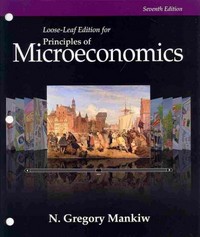Please show workings
1. A vegetable ber is traded in a competitive world market, and the world price is $9 per pound. Unlimited quantities are available for import into the United States at this price. The US. domestic supply and demand for various price levels are shown as follows: Price US. Supply (Million LBS) US. Demand (Million LBS) 3 2 34 6 4 28 9 6 22 12 8 16 15 10 10 18 12 4 (a) What is the equation for demand? What is the equation for supply? (b) At a price of $9, what is the price elasticity of demand? What is it at a price of $12? (c) What is the price elasticity of supply at $9? At $12? (d) In a free market, what will be the US. price and level of ber imports? 2. In 2010, Americans smoked 315 billion cigarettes, or 15.75 billion packs of cigarettes. The average retail price (including taxes) was about $5.00 per pack. Statistical studies have shown that the price elasticity of demand is -0.4, and the price elasticity of supply is 0.5. (a) Using this information, derive linear demand and supply curves for the cigarette market. (b) In 1998, Americans smoked 23.5 billion packs cigarettes, and the retail price was about $2.00 per pack. The decline in cigarette consumption from 1998 to 2010 was due in part to greater public awareness of the health hazards from smoking, but was also due in part to the increase in price. Suppose that the entire decline was due to the increase in price. What could you deduce from that about the price elasticity of demand? 3. Refer to Example 2.10 (Unit 2 lecture), which analyses the effects of price controls on natural gas. ECON2000 Tutorial 2, Page 2 of 2 (a) Using the data in the example, show that the following supply and demand curves describe the market for natural gas in 200572007: Supply : Q = 15.90 + 0.72Pg + 0.05130 Demand : Q = 0.02 1.8Pa + 0.69130 Also, verify that if the price of oil is $50, these curves imply a free-market price of $6.40 for natural gas. (b) Suppose the regulated price of gas were $4.50 per thousand cubic feet instead of $3.00. How much excess demand would there have been? (c) Suppose that the market for natural gas remained unregulated. If the price of oil had increased from $50 to $100, what would have happened to the free-market price of natural gas







